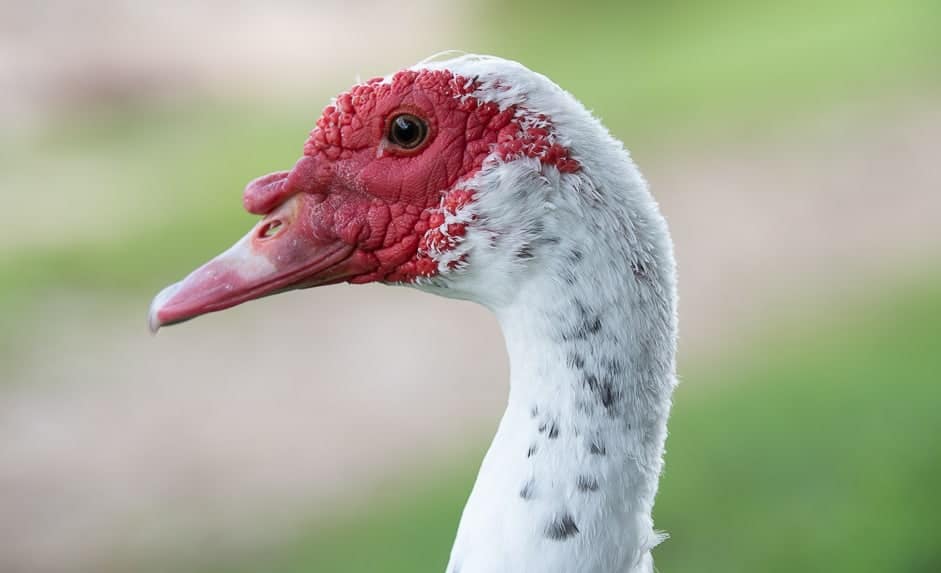
If you spend much time on sanctuary grounds, you likely know that residents have complex and fascinating personalities and quirks. Because many folks have likely never met individuals living out their lives in sanctuary before, we have created a series of resources compiling fun and fascinating facts about residents to share with supporters and the general public. Ducks are amazing beings who deserve to be better known!
10 Fun Facts About Ducks
- Did you know that “city ducks” have been found to have a different accent from country ducks? Researchers in the UK found the city ducks have a louder “QUACK!” compared to country ducks!
- In fact, vocal communication happens while little ducklings are still in their egg! Waterfowl will communicate with others in the nest to synchronize their development in order to try and hatch around the same time. They also learn to recognize the sound of their mother’s voice nearby.
- But ducks aren’t all talk! They also have pretty spectacular visual capabilities. The way their eyes are structured allows them to see things in finer detail at a farther distance than humans. Additionally, they can see UV light- this helps them see the world in a vastly different way than we do!
- Ducks have the ability to control each of their eyes independently. The information they take in with one eye is stored in their memory on the opposite side of their brain!
- Building on this last fact, ducks are able to literally sleep with one eye open! Ducks can put one side of their brain to sleep at a time, ensuring they can stay vigilant in case of predators.
- Their bills of ducks are highly sensitive with many touch receptors, similar to those in our fingertips and palms!
- Duck bills vary between species, and the structure of the bill relates to its function. Flat bills are great for consuming material like seeds, algae, and plants. Narrower, more pointed bills can be found on ducks who eat fish.
- You know that ducks need to swim, but how do they manage to swim when it’s cold out? One of the reasons is their feet don’t have a lot of muscles, and their blood vessels are very close together. This prevents ducks from losing heat in the water as they can easily warm the blood being pushed back into their body.
- Ducklings are capable of abstract thought! They can understand the relationship between objects and consider the sameness or differences between objects without solely considering the characteristics of an object.
- Scientists know that many ducksUnless explicitly mentioned, we are referring to domesticated duck breeds, not wild ducks, who may have unique needs not covered by this resource. show a preference for the color green or colors closest to that spectrum, like blue! Do you and ducks share a favorite color?
Hopefully this gives you and your visitors a better idea about the complex and fascinating lives of ducks. Did you find any of these fun facts surprising? Or would you like to see a verified fun duck fact added to this list? Let us know!
SOURCES:
Ducks Might Be Capable Of Abstract Thought, Say Scientists | CS Monitor (Non-Compassionate Source)
Understanding Waterfowl: The Five Senses | Ducks.org (Non-Compassionate Source)
Getting All Your DucklingsYoung ducks In A Row: A Look Inside The Animal Mind | Harvard.edu (Non-Compassionate Source)
DuckUnless explicitly mentioned, we are referring to domesticated duck breeds, not wild ducks, who may have unique needs not covered by this resource. Bill’s Sensitive Touch Develops In The Egg | Science Mag (Non-Compassionate Source)
9 Cool Things You Should Know About Ducks | Iowa Department Of Natural Resources (Non-Compassionate Source)
A Bird’s-Eye View | Ducks.org (Non-Compassionate Source)
Half-Brained Ducks In A Row | Science Mag (Non-Compassionate Source)
If a source includes the (Non-Compassionate Source) tag, it means that we do not endorse that particular source’s views about animals, even if some of their insights are valuable from a care perspective. See a more detailed explanation here.








